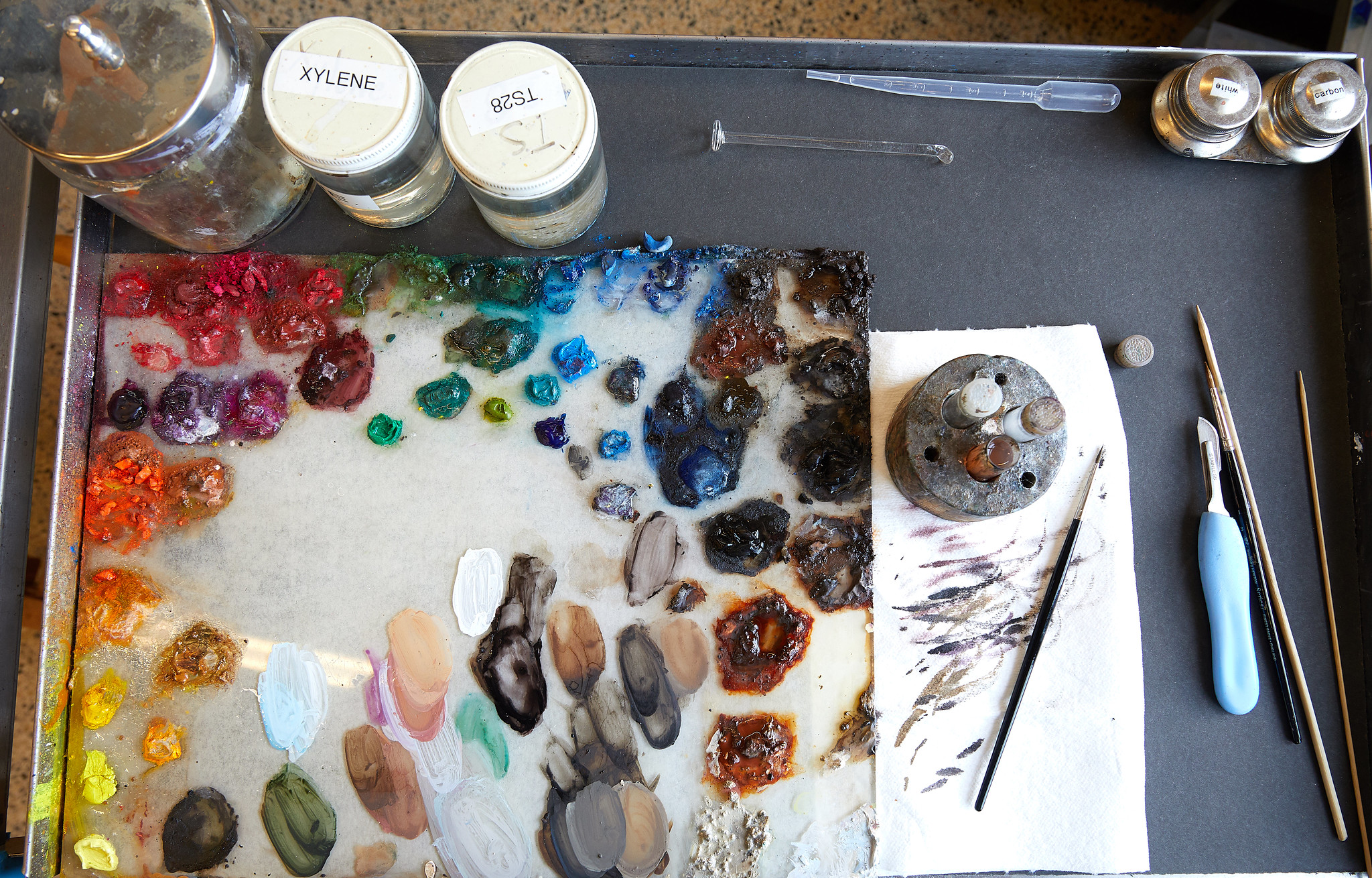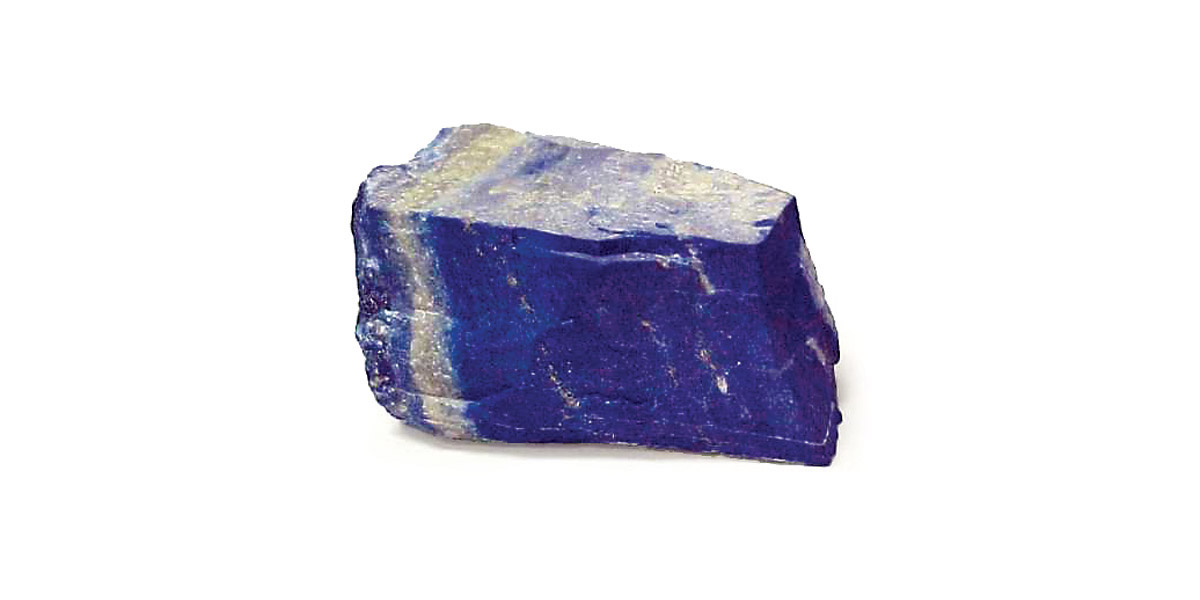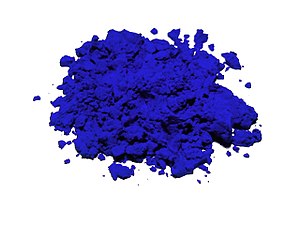The pigments in our painting department are organized in color order, a satisfying rainbow of options for our conservators to choose from. But even the most flashy pigments – metallic golds and silvers – are curiously outshined by a more expensive, historically significant rival: ultramarine blue.
Pigments lined up on the cart in the painting department.
Ultramarine blue used to cost up to five times more than gold. Just like purple was reserved for nobles, blue was reserved for those that could afford it.
The Lapis Lazuli stone in raw form.
Why the exorbitant cost? Blue is a color that rarely appears in nature. It only appeared when Egyptians started mining lapis lazuli, a semi–precious stone, blue in color with little flecks of gold. They were so entranced by it that Cleopatra used to wear it as eyeshadow. Even then, the cost of obtaining the blue color was prohibitively expensive.
Powdered Lapis Lazuli, the original ultramarine pigment (and ancient Egyptian eyeshadow.)
The word “ultramarine” comes from the Latin ultramarinus, or “beyond the sea,” because it first reached Europe from mines in Afghanistan from Italian traders in the dark ages. Given its scarcity and preciousness, it was reserved for the most important figures – namely paintings of Mary, Queen of Heaven, or other religious commissions. It was even said that Michaelangelo couldn’t even afford it, leaving his painting The Entombment unfinished without the pigment.
Artist Yves Klein has made a career of works inspired by the pigment.
So how did this precious commodity come to be sold in plastic tubes, easily affordable at art supply stores? A contest, of course. In 1824, France’s Société d’ Encouragement offered a reward of 6,000 francs to anyone who could replicate ultramarine – and two men immediately stepped forward, both claiming to have solved the mystery suddenly and within a week of each other. The results are still contested, but the synthetic version of the pigment was a scientific and artistic development that has led to the accessibility we have today.
A chart of various blue pigments.






